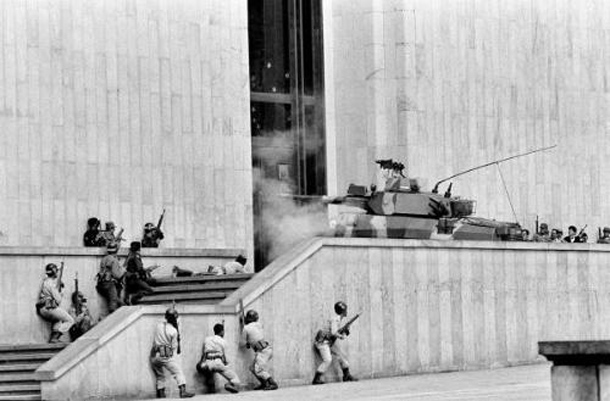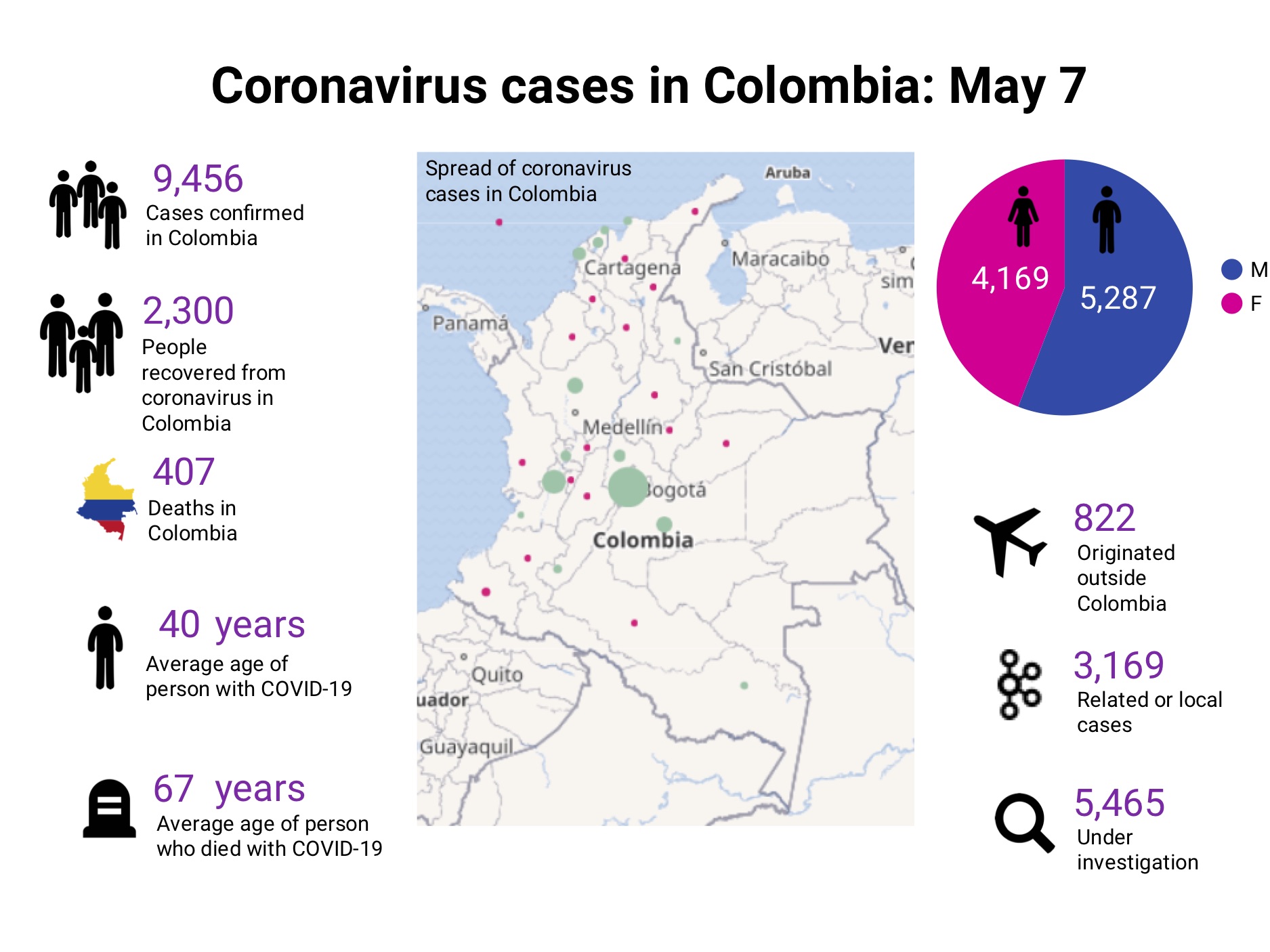
Dr Ana María Ibáñez researches the microeconomic analysis of the armed conflict. In particular, she studies the consequences for households and victims. Photo: economia.uniandes.edu.co
Although benefits from the post-peace economy will not outweigh the external pressures on the economy in the short term, the positive impact of the end of the internal conflict will be felt for decades to come
Talk to economists at Colombian investment banks about the post-peace economy and you’ll find very few taking the peace deal into account when they make their forecasts. In fact, speak to emerging markets investors and you’d be surprised at how many will tell you the effects of the much discussed “peace dividend” have already taken place.
It may sound bleak, but there is a school of thought in the global investor community that – economically speaking – the most important step to making Colombia a respectable investment destination has been the decrease in violence that began over a decade ago.
It’s true that since 2002, Colombia has experienced increased levels of investment and tourism, earned solid investment grade credit ratings and, according to the World Bank, lifted six million people out of poverty.
And all of that in spite of the brutal reality: large swathes of the country continue to live through crushing levels of violence and uncertainty, which come at a considerable human and economic cost.
Surely an end to the violence would reduce those costs? One would think that even an absolute minimal effect – stopping attacks on the country’s infrastructure, say – would have to bring some kind of positive impact.
“Yes, the economy has enjoyed a dividend from lower violence over the past decade, but remember that the country still spends a lot of money on the conflict in rural areas, on military security, on repairing infrastructure,” says Daniel Velandia, chief economist for Colombia at Credicorp Capital.
Velandia is one of the majority that is not factoring peace into his economic forecasts – but not because he feels the peace dividend has already paid out. Rather because the signing of a peace deal will not bring immediate, easy-to-measure results. It will be the beginning of a long and complex transition period with many unpredictable factors.
The truth is, not only are there many other factors such as tax reform and oil prices weighing on analysts’ predictions, there hasn’t been a conflict nor a peace process quite like this one. And in the immediate term, the government will face significant costs after the peace deal is signed to ensure peace on paper equates to peace on the ground. That will mean filling the power vacuum in conflict zones to avoid what followed various peace deals in Central America in the 1980s, where combatants just morphed into armed gangs. Moreover, there will be victim reparations costs – in which the government is already investing around 1% of GDP.
Even official estimates of the peace dividend are pretty varied, suggesting that nobody is quite sure how to quantify the economic effects of the proposed peace deal. Finance minister Mauricio Cárdenas has said that peace would increase potential GDP by 1% per year, while in December 2015 President Santos claimed it would generate a 1.5% improvement. A subsequent report from the economic planning department estimated potential GDP would increase by between 4% and 5.9%.
Beyond the obvious
Most financial market economists are focusing on the peace deal’s effect on the investment climate. Indeed, after meeting President Santos in February, IMF managing director Christine Lagarde chose to focus on the fact that the peace process “would enhance the climate for investment and growth, especially in rural areas”.
Those arguing that investors already see Colombia as a more secure destination might dismiss Lagarde’s prediction by pointing to foreign direct investment numbers that rose from a trough of just USD$1.72 billion in 2002 to a peak of USD$16.33 billion in 2014, according to Banco de la República, Colombia’s central bank.
Yet much of that increase has come from hydrocarbons, thanks – at least in part – to Uribe’s government easing regulation to facilitate investment in oil, as a way of taking advantage of USD$100 per barrel crude prices. And if managed correctly, the new accessibility of large parts of the country should still have exciting consequences in other sectors, in particular: tourism and agriculture.
As President Santos told this year’s Anato tourism fair in Bogotá, the number of tourists has increased by over 60% in five years. This is perhaps more fodder for those peace dividend pessimists who claim that the momentum shift occurred well before the peace process.
But the president highlighted to Anato that once the peace deal is signed “there will be no more excuses” for those foreign students or businesspeople who want to see the country, but whose organisations prohibit them from visiting countries officially in conflict, like Colombia.
Furthermore, peace has the potential to open up more regions for tourism that remain dangerous even now. Indeed, it was only a few years go that spectacular sights such as Caño Cristales became considered safe for visitors.
A similar phenomenon could occur in agriculture, with peace likely to facilitate the development of swathes of land that today are inaccessible or occupied by the FARC. In this respect, the vast Eastern Plains – around 15,000km2 of mostly high-quality land – are expected to lead the way.
However, there is more to the post-peace economy than improving the investment climate. The World Bank gave a neat precis of broader potential positive effects in a 2015 report.
“The peace dividend has the potential to free up enormous public and private resources for more productive use, free up large territorial areas for settlement and investment, reduce uncertainties in future planning, ease crippling social hardship, and enable more geographically equitable provision of public and infrastructure services across large swathes of the country,” said the multilateral lender.
A book published early this year by Los Andes University perhaps does the best job of exposing just how futile it is to make estimates of the effect on GDP.
The Social and Economic Costs of the Conflict in Colombia covers such diverse topics – from small farmers, to the decision making of companies, to mental issues in the local population – that it makes a mockery of those claiming that Colombia has little left to gain economically by signing the peace deal.
One piece of data provided by Dr Ana María Ibáñez, dean of the university’s economics department and one of the authors of the book, is a particularly striking example of the less obvious damages that the conflict has caused.
Studies have shown that if the conflict had not taken place, the average length of a person’s education would have increased by 3.2 years between 1980 and 2010. As it stands, that figure is only 2.5 years – so the conflict has effectively cost the country six years of progress.
As the introduction to the book points out, “although the country suffers high costs caused by the armed conflict, these costs are concentrated in a disproportionate manner within certain groups of society”.
Colombia’s conflict has, after all, lasted more than half a century, claimed more than 220,000 lives and victimised more than seven million. Economic benefits will surely, therefore, not just come from the opening up of different sectors to more investment but from improvements in human capital.
For this to translate into a tangible improvement in GDP is clearly going to be a process of several years, or even decades, and is virtually impossible to quantify. But once a peace deal is signed, and as long as Colombia can transition into a more peaceful country, so many aspects of the post-peace economy stand to enjoy better conditions that some kind of peace dividend looks inevitable – no matter how long it takes to reflect in the numbers.





